Stocking freeze-dried foods is a basic strategy of many preppers’ long-term food storage plans. The threat of pandemics, civil unrest, economic collapse, and other SHTF scenarios that might mean little-to-no food on grocery store shelves keeps people looking for foods that have long shelf lives. Nothing has a longer shelf-life than freeze dried foods as the typical expiration date is around thirty years from the date of production!
Food storage should really be one of your main priorities these days. One of the best ways to preserve food is freeze-drying. It’s an expensive process (hence the retail prices). However, these days you can find quite a variety of these foods at discount stores and online. Shop strategically for sales and deals and you can extend your purchasing power.
A Brief History of Freeze-Drying
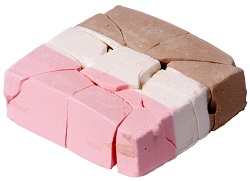
Freeze drying (scientifically called lyophilization) is a food preservation process practiced by the indigenous people in the Andes mountains as far back as 15th century. Chuño is a type of small potato that is portable, retains high nutritional content, and is edible decades after it has been processed. It was a staple of the Incan soldiers for centuries and continues to be a popular food choice in certain regions. To achieve a freeze-dried effect, they would place the potato on stone slabs high above Machu Picchu. The cold mountain temperatures froze the potatoes, and then it would dehydrate during the next day’s sun, evaporating the frozen water. This created a “mummy” potato.
Industrial freeze-drying was first invented in 1890 by Richard Altmann but did not gain popularity until the 1930s. Interest peaked during World War II when it was discovered that penicillin and blood plasma could be freeze-dried which kept them chemically stable in areas where refrigeration wasn’t an option. Beginning in the 1950s, freeze-drying began being used in food preservation as well. The process for food preservation crept into households through novelty items, mainly the freeze-dried ice cream used by NASA astronauts. The industry for freeze-dried food has expanded exponentially since then to where it is today – available for purchase online and in big box stores.
The Modern Freeze-Drying Process
“Freeze drying” is – at its most basic level – a water removal process. When it contains no water, food lasts significantly longer.

Modern freeze-drying has three steps: freezing, primary drying, and secondary drying. After the food has been frozen, it is put into a low-heat vacuum chamber. The frozen water crystals evaporate in a process called sublimation. A second drying process is done with marginally higher temperatures. The food is then nitrogen sealed.
Freeze-Drying is Better than Dehydrating
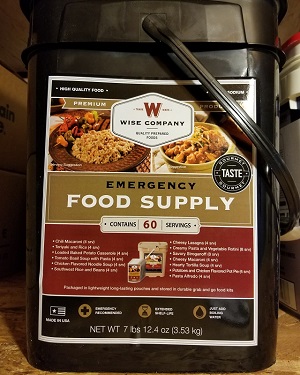
Freeze-drying removes about 98 percent of the water content. Dehydration only removes about 80 percent. This difference results in a longer shelf-life for freeze-dried foods. Dehydrated foods typically last between one and five years while freeze-dried foods can last between 20 and 30 years.
Freeze-drying has less of an effect on the taste, smell, texture, and nutritional value than dehydration. Freeze-dried berries, for example, retain about 90 percent of anthocyanins which is thought to prevent cancer. Vitamins C, E, and folic acid do tend to become depleted through freeze-drying. Comparatively, dehydrated foods lose about 50 percent of their nutritional value during the drying process. Dehydrated food is also chewier and loses some of the original color and smell.
Freeze-dried food rehydrates more quickly than dehydrated food. Dehydrated food takes between 10 and 20 minutes to rehydrate with boiling water. On the other hand, freeze-dried food typically takes less than five minutes to rehydrate in either hot or cold water.
What Foods Can Be Freeze-Dried
Small fruits and vegetables are the easiest food items to freeze-dry. Olives, water chestnuts, corn, beans, tomatoes, peas, lemons, berries, pineapples, and oranges are easily freeze-dried. Small chunks of crab, lobster, beef, shrimp, and chicken can be freeze-dried. Coffee is the most common liquid that is freeze-dried in the form of instant coffee.
Benefits of Freeze-Drying
Shelf-Life. Freeze-drying extends the shelf-life of food considerably while maintaining most of the nutritional value and flavor. Because of the low-temperature processing and sublimation, the food does not deteriorate, brown, or lose its nutritional content.
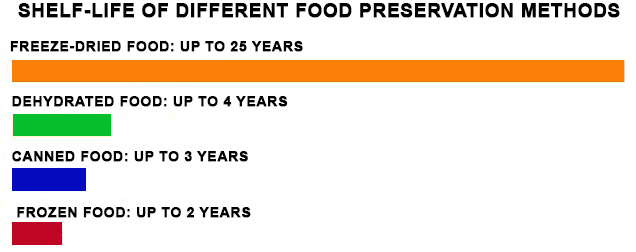
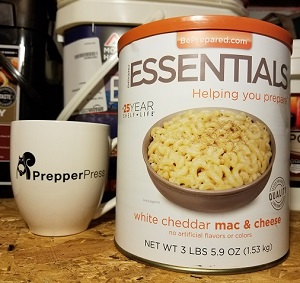
Most freeze-dried products have a shelf-life of at least several years. Some are still edible decades later if the packaging is not compromised. Many companies that specialize in freeze-dried foods sell their products in one-gallon nitrogen-sealed cans which prolong shelf-life to about 25 to 30 years unopened. Preppers also often buy what is known as #10 cans of freeze-dried food. These cans make up the bulk of many freeze-dried food products that get stored for uncertain times.
Better Retention of Food Qualities. Freeze-drying allows for nearly full re-hydration of the food. It makes it an excellent option for ready-to-eat instant meals. It also means the aroma, texture, and taste are very close to fresh, unprocessed food. The majority of nutrients are never lost.
Drawbacks to Freeze-Drying
Nothing is perfect, and freeze-drying is no exception. It has many benefits for preppers, but also comes with a few drawbacks.
Energy Intensive. Industrial freeze-drying is extremely energy-intensive when compared to other types of food processing. For example, freeze-drying takes about 1.2 times the energy of canning and 1.7 times more energy than basic freezing. The energy use drives up the price of freeze-dried products. So, if you’re prepping for climate change, you’ll have to balance your desire for freeze-dried products against the need to decrease energy use.
Bacteria. Even after freeze-drying, some microbial organisms remain. After all, freeze-drying is one method scientists use to preserve bacteria. If the freeze-dried product is not properly packaged and moisture is able to build up, organisms that spoil food can reproduce, rending it inedible, and potentially deadly.
Silicone Oil. Another hazard in the freeze-drying process is silicone oil contamination. Silicone oil is often used to cool and heat the shelves of the freeze-dryer. It’s possible that over time, the hose may wear out, allowing the silicone oil to leak into the product.
More Water Storage. The other drawback to freeze-dried foods – from a prepper’s perspective – is the need for water to re-hydrate the food. Many people, in their long-term preparedness plans, fail to account for the water needed to re-hydrate large stocks of freeze-dried foods. They account for drinking and hygiene needs, but may overlook how much water they will need for food re-hydration. Long-term preparedness plans that include many freeze-dried food products must account for a higher use of water.
Best Freeze-Dried Foods for Survival
Odds are high that you came to this article because you are interested in freeze-dried foods for survival purposes. What are the best freeze-dried foods for survival? The foods that will 1) be most familiar to your pre-collapse diet, 2) give you a varied supply of vitamins and nutrients, 3) give you plenty of calories, and 4) offer the most food for your dollar.
Freeze-dried foods by their very nature are great for survival purposes. You can’t go wrong stocking it with your other long-term survival foods. Stock as much of it as money and practicality allow. Stretch your dollar by looking for sales and deals, which brings us to…
Where to Buy Freeze-Dried Foods
Although you can get freeze-dried products on sites like Amazon, you will almost certainly get more options at better prices if you order directly from the company website. This is especially true if you watch for sales, which we track and update weekly on our freeze-dried sales page. If you are looking for places where you can buy freeze-dried foods, the following companies are better options.
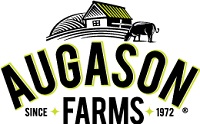
Augason Farms is a family-run survival food company founded in 1972. Their products are available online and at Walmart, Associated Foods, WinCo, Sam’s Club, and Costco. They have buckets and cans of freeze-dried meat, eggs, cheese, fruit, and vegetables. To stretch your dollar, your best bet is to go to their site and capitalize on the rotating deals and specials they offer. Augason sells a variety of products that some other manufacturers don’t carry. For example, five-gallon buckets of hard wheat. Their food kits exceed the USDA recommendation of 2,000+ calories per day.

Emergency Essentials has been in operation since 1987, billing themselves as “a one-stop-shop for emergency supplies.” While they do offer different emergency preparedness gear, their bread and butter is food (pun intended). They sell freeze-dried fruit, vegetables, meat, cereal, eggs, stew, noodle casseroles, rice dinners, and biscuits and gravy. They have a larger selection of one and two-serving size products than some other companies.

Legacy Food Storage offers free shipping to orders within the continental U.S. They offer fruit, vegetables, meat, cheese, as well as bucket sets with 720-serving and 4320-serving supplies. On bigger orders, they also offer financing and monthly payment plans for 3, 6, and 12-month periods. Like other manufacturers, they have different products to suit different prepper needs. Meal packages, samples, bulk items, drinks, etc. They also offer a limited amount of survival gear.
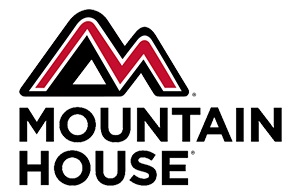
Mountain House is an Oregon-based company founded in 1969. They are probably one of the most widely-recognized name in freeze-dried foods. They offer military rations, breakfasts, desserts, meat and sides, entrees, and bucket sets ranging from 2 to 14-day supplies. They also have smoothies, gluten-free options, and single-serving portions. They are probably most known for their individual-sized backpacking and camping food packs (great for bug out bags as well).

My Patriot Supply was founded by those with a passion for self-sufficiency. They offer an extensive inventory of freeze dried foods, coffee, and various food-related survival supplies. Water filtration, air purification, and deals of the day – see what they have when you compare pricing across different manufacturers.

Ready Store is a store that offers more than just freeze-dried foods (and their freeze-dried food selection is diverse). They sell food storage equipment, MREs, water storage supplies, and more. If you really want to go extreme, you can even buy one of the home freeze dryers they sell and start making your own!

ReadyWise (formerly Wise Company) has freeze-dried meat, fruit, eggs, and vegetables. They have single servings as well as 52, 60, 84, 90, 124, 170 bucket sets. ReadyWise has competitive pricing and (as of this writing) also offers 6% off if you’re using the Rakuten app for online shopping discounts. Combine that 6% off with their ongoing, rotating specials, and you can really stretch your dollar.
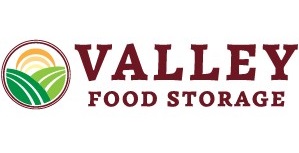
Valley Food Storage has bucket-sized and single-serving options of fruit, vegetables, cheese, peanut butter, pasta, rice, soups, oatmeal, and milk. The bucket options are one, three, six months, and one-year sizes. The kits of this type can represent a significant outlay of cash up front, but if you have those funds, and your plan is to build a large inventory of freeze-dried foods, buying in bulk like this saves money over the long-term. For example, a six-month food kit (at the time of this writing) sells for a little over $1,000. This is costly up front, but six-months’ worth of food typically costs far more than $1,000.
Freeze-Drying at Home
Domestic, personal freeze dryers have come to market in recent years. This brings what was previously equipment available only for commercial purposes direct to the end consumer. The Ready Store offers personal freeze dryers for purchase. They sell three units: small, standard, and large. The standard size is, a favorite for most, is priced in the area of $3,000.
How a Personal Freeze Dryer Works
The process is essentially a scaled-down version of industrial freeze dryers. You place the food you want to freeze into the trays and press the start button on a digital screen. Everything is automatic from there. The machine beeps to notify you when the drying process is complete. You then place the finished food into an airtight container like a Mylar bag and add some oxygen absorbers. The final step is the same process preppers use to store foods like rice and beans.
Are Home Freeze Dryers Worth the Money?
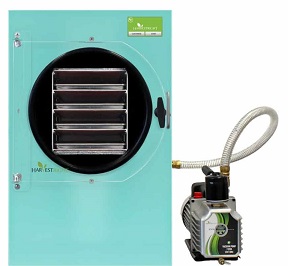
I have written an entire article on this subject. How much freeze-dried food do you use on a regular basis (camping, hiking, etc.) and how much do you want to have in your long-term food storage? You can then crunch the numbers to see what makes the most sense (don’t forget to account for mylar bags, oxygen absorbers, and energy costs).
Space is another factor to consider. These machines are not small and they can weight 100-200 pounds. The standard freeze dryer measures at 20″ wide, 25″ deep, and 30″ high.
The best economic gain from buying a freeze dryer from the home is if you have a large family or you have friends who can share the costs with you. Also, if you have an extensive garden and preserve all of your food, having a home freeze dyer would add another method of food preservation to conventional freezing and home canning.
Freeze-Dried Food and Prepper Food Storage
Whether you go for the mega-sized bucket sets, #10 cans, or stock up on individual servings, freeze-dried food should be a staple in any prepper’s pantry. They add a long-term component to your food storage plans that supplement your total food storage in both shelf-life and diversity. It is the ultimate “set it and forget it” pantry food.

8 comments
I see no links to recommended companies.
Under the heading “Best Places to Buy Freeze-Dried Foods”
I refreshed the browser & see it now. You can delete the comment. Thanks!
Another option is ThriveLife. They’ve moved away somewhat from the full on emergency preparedness theme they started with but still carry many foods in #10 cans as well as smaller ‘pantry cans’ and complete meals.
How do you know when freeze dried foods are bad? I would hate to poison my family.
With the water removed and properly sealed, it’s very difficult for these foods to go bad.
Thanks good to know.
In general, if the dried food begins to have a moldy or fishy smell, it’s gone bad.